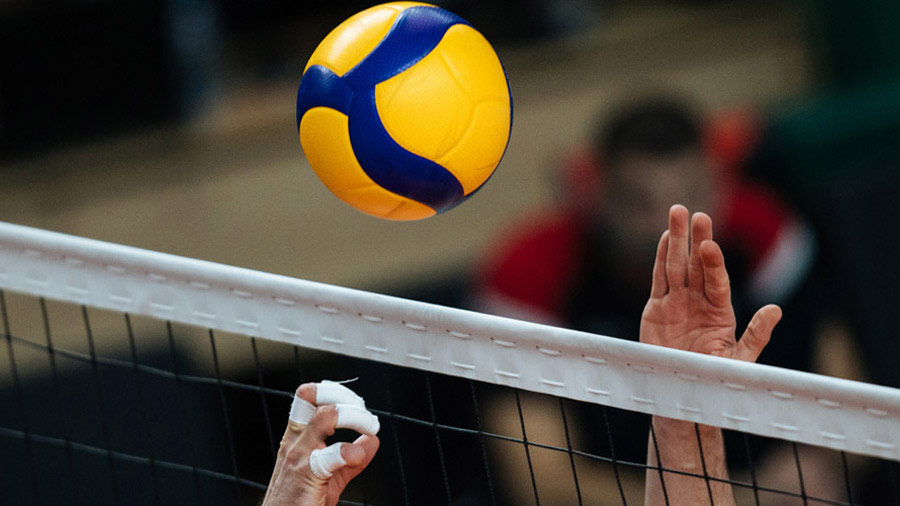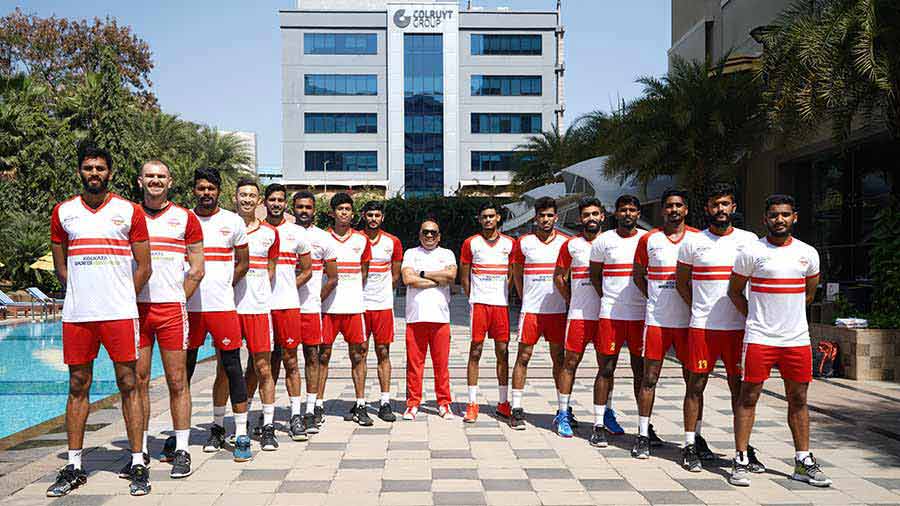Volleyball is back on the sports centre stage with the inaugural edition of the RuPay Prime Volleyball League (PVL) starting on Saturday (February 5) evening.
Apart from the Kolkata Thunderbolts, whose digital media partner is The Telegraph My Kolkata, six other teams will compete in the first edition of the PVL: Calicut Heroes, Kochi Blue Spikers, Ahmedabad Defenders, Hyderabad Black Hawks, Chennai Blitz and Bengaluru Torpedoes.
When do the Kolkata Thunderbolts play?
The Kolkata Thunderbolts, co-owned by Pawan Kumar Patodia and Vineet Bhandari and partnered by The Telegraph My Kolkata, will start their campaign on February 7 against the Calicut Heroes. Four days later, on February 11, they take on the Chennai Blitz, followed by an encounter against the Bengaluru Torpedoes the day after on February 12. The Hyderabad Black Hawks follow on February 15, before the Thunderbolts play their last two league matches against the Ahmedabad Defenders and the Kochi Blue Spikers on February 19 and 23, respectively.
Apart from the match against Chennai, which starts at 9pm, all of Kolkata’s matches will begin at 7pm. The PVL matches will be available LIVE on Sony Ten 1, Sony Ten 2 (Malayalam), Sony Ten 3 (Hindi), Sony Ten 4 (Tamil and Telugu) as well as the SonyLIV subscription service.
Who’s in the home team?
The Kolkata Thunderbolts squad is 13 strong, with star blocker Ashwal Rai as captain. At 6’6”, the 28-year-old Indian international is a formidable presence and is tipped to be one of the most impactful players in the PVL. His impressive resume includes competing at the Olympic Games and clinching gold at the South Asian Games.
Among the Thunderbolts’s overseas recruits are Americans Ian Satterfield and Matthew August, both of whom are expected to be regular starters consolidating the spine of the team. Satterfield has spent almost 15 years plying his trade on the court whereas August, flying in straight from Denver, Colorado, has settled in quickly.
Born in Uttar Pradesh, but the face of volleyball in Assam, Vinit Kumar Choudhary, called the “Iron Shield '', should prove invaluable for the Thunderbolts with his experience.
Md Shafeeqe Rahman will provide cover for Rai as middle blocker while Hari Prasad will be the go-to man as libero. Janshad U and Aravindhan S are expected to rotate as the setter. In attack, Tharun Gowda K, Mohamed Riyazuddin, Rahul K, Anu James and hometown boy Sujoy Dutta will be entrusted to make the all-important breakthroughs.
Sunny Joseph, former chief coach of the Indian women’s volleyball team, who has over 30 years of experience under his belt, will provide the tactical edge to the Thunderbolts.
Speaking about his team’s chances, Thunderbolts’ co-owner Patodia, who is also the co-founder and chairman, said: “I have no doubts that the Kolkata Thunderbolts will perform well in the tournament. But, for me, the most important thing is that the players express themselves freely. My message to my players will only be to express yourself freely as you are, without the pressure of winning. Play your natural game as if this is the last season of your career, and I am sure we will perform like champions.”
Was there not a volleyball league a few years ago?
In 2019, the Pro Volleyball League, jointly run by the Volleyball Federation of India (VFI) and Indian sports marketing firm Baseline Ventures, had become the first professional volleyball competition to be organised in India, inspired by the franchise-based models of the Indian Premier League (IPL) and the Pro Kabaddi League (PKL). However, disputes between the VFI and Baseline spelled a premature end for the tournament.
The PVL represents a fresh start for a sport that is considered to be among the five most popular sports in the country. Led by CEO Joy Bhattacharjya, PVL’s structure resembles that of American sports leagues like National Basketball Association (NBA) and Major League Soccer (MLS), where team owners are also involved as stakeholders.

Believed to have started in 1895 as a new game called Mintonette, volleyball has been an Olympic sport since 1964 TT archives
Format and rules
-
The PVL will follow a round-robin format where every team plays each other once before the top four make it to the semi-finals. The final is scheduled for February 27. All the matches are being hosted by the Gachibowli Stadium in Hyderabad.
-
In terms of rules, standard volleyball regulations prevail. There are six players in each team, three in the front row and three in the back. The left-sided outside hitter is the team’s lead attacker and the one responsible for securing the most points. The opposite hitter in the form of the right-sided attacker has a similar role, but with more defensive duties. Then there is the middle blocker, a role conventionally reserved for the tallest person in the team, who spearheads the defence and attempts to block at the net. The setter is the team’s playmaker, the one who dictates the pace and flow of the game. The libero, usually in a different-coloured kit, is a purely defensive player who spends their time on the back court. Finally, there is the defensive specialist, who is the main receiver and passer of the team.
The PVL will follow a round-robin format where every team plays each other once before the top four make it to the semi-finals. The final is scheduled for February 27. All the matches are being hosted by the Gachibowli Stadium in Hyderabad.
In terms of rules, standard volleyball regulations prevail. There are six players in each team, three in the front row and three in the back. The left-sided outside hitter is the team’s lead attacker and the one responsible for securing the most points. The opposite hitter in the form of the right-sided attacker has a similar role, but with more defensive duties. Then there is the middle blocker, a role conventionally reserved for the tallest person in the team, who spearheads the defence and attempts to block at the net. The setter is the team’s playmaker, the one who dictates the pace and flow of the game. The libero, usually in a different-coloured kit, is a purely defensive player who spends their time on the back court. Finally, there is the defensive specialist, who is the main receiver and passer of the team.
- Each team is allowed to have a maximum of three touches (excluding blocks at the net) of the ball before it has to cross the net. Players can use any part of their body to keep the ball in play, but they are not supposed to catch, hold or throw it. No player can have two consecutive touches of the ball (excluding blocks at the net) and touching the net while the ball is in play is prohibited.
- Matches are generally won by best of five sets, where the first four sets are up to 25 points (requiring a minimum difference of two points to be won) and the fifth and final set is up to 15. Whichever team is the first to win three sets wins the match.
